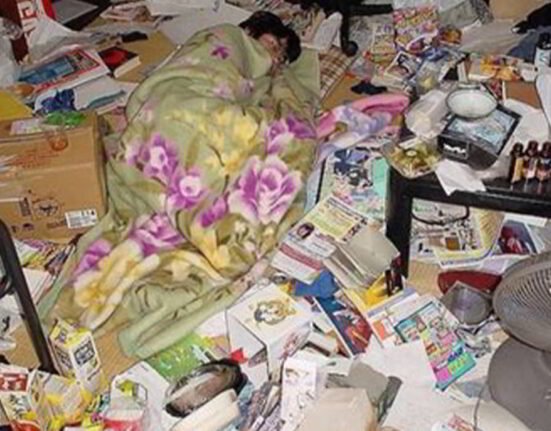Drug and substance abuse continues to be a problem in most developed and developing countries around the world. According to the United Nations Office of Drugs and Crime’s 2021 forecast, there will be an almost 11% increase in drug users worldwide by the end of this decade. India’s scenario is no different. An estimated 22,000 individuals died in 2017 as a result of illicit drug use. Since then, the number has continued to rise. Drug addiction, like many other issues, has varied effects on men and women. While much has been said and done to address the problem in recent years, it has not been examined from a gender perspective. Women are not treated equally when it comes to selecting a sample for research studies. Regardless of whether they are included in the sample, no gender-specific notions are used to understand the causes and consequences. In 2012, India had 250 drug users per 100,000 people. According to most research, men have a higher rate of substance abuse than women. In 2016, men were twice as likely as women to be addicted to alcohol or drugs globally. According to a 2012 poll, women made up more than 42% of the 41.5 million illicit drug users in the United States, reflecting a current male/female ratio of 1.4:1. In India, research that highlights data based on gender is mostly absent. Punjab has mostly focused on male de-addiction, which is infamous for its addiction problem. The state’s data on female addiction is limited. Although specialists estimate that there are thousands of female drug users in the state, the exact number is unknown.
Drug addiction is typically portrayed as a moralistic and individualistic problem. That, however, may not be the best response to the problem. Addiction predisposition is commonly linked to a person’s social environment and economic conditions. Education, occupation, family income, gender, and social hierarchy all have an impact on a person’s probability of being addicted. People impacted by drug addiction are one of the most marginalised and underserved communities, according to the Magnitude of Substance Use in India Report, 2019. Drug addiction has a societal impact, and social factors influence the likelihood of falling into the drug trap. While addiction is often seen as a victimless crime, it also contributes to social disturbance. A woman is often considered someone who is morally righteous and follows social norms, especially in our nation. Even when substance abuse is considered a universal crime, women face gendered norms. According to a documentary produced by Alliance India, a non-governmental organisation that works in partnership with civil society, government, and communities to support long-term HIV responses, even if they have become addicted as a result of their husband’s frequent use. The inability to enter a rehabilitation institution is another issue that many women face. Even if they want to do so, their domestic and familial commitments prevent them from doing so. Men are frequently prioritised for treatment because they are typically the breadwinners.Many of the country’s data on drug addiction are still based on small-scale studies or anecdotal information. The problem is significantly more prevalent among women. First and foremost, women are not treated equally when it comes to selecting study samples. Regardless of whether they are included in the sample, no gender-specific conceptions are used to understand the causes and consequences. The concepts of masculinity and femininity, which serve as the foundation for gender-focused research in any area, have long been disregarded in India. Aside from that, there is little information on how therapies affect men and women differently.
Despite a global drive to feminise the HIV epidemic, India’s current HIV response is insufficient; women who inject drugs are often overlooked. Women are socially excluded and vulnerable. They suffer more than men due to a lack of resources and information needed to defend their health and well-being. If individuals participate in risky sexual behaviour and share injecting equipment with their partners, they are more likely to develop HIV and Hepatitis C. This, on the other hand, does not receive the attention it deserves. Women face a multitude of obstacles, including mental health issues, reproductive health issues, child care challenges, societal stigma, and abuse, as well as the risk of contracting HIV from injecting drugs. Even if women are not the major users of drugs and other substances, they are the ones who endure the burden of addiction when other family members become dependent. Due to guilt and humiliation, women who are frequently criticised for not fulfilling their obligations as “mothers” when their sons become addicted develop anxiety and depression. Men and women have diverse patterns of drug and substance abuse. Similar research is needed in India to better understand the impact of gender socialisation and stratification on women’s drug use and recovery. Women in modern culture face a distinct scenario, which is influenced by the duties and obligations they are required to fulfil. Their empowerment and recovery from substance abuse can only be achieved if their unique needs are recognised and addressed.
“Life skills training,” “women’s theatres,” “out-of-school programmes,” “developing family relationships,” and other programmes have all helped in the United States. These programmes were aimed at high-risk individuals. In high-risk cities such as Cupertino, Salinas, and San Francisco in California; Louisville, Kentucky; and White Plains, New York, there has been a reduction in alcohol, tobacco, and marijuana users thanks to adequate financing and expertise. Such treatments can be effective in India if done correctly. However, these programmes must be examined regularly to determine their effectiveness. Drug policies that are gender and age-sensitive are needed, with a focus on the interests and concerns of women and young people. Keeping the cultural context in mind, vital services such as transportation, financial assistance, and child care assistance must be provided to women seeking professional help. These could also help women seeking therapy gain more family support. The issue can be solved by opening doors for discussion and implementing inclusive and compassionate strategies.












Leave feedback about this